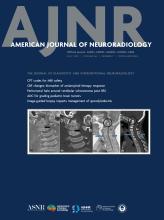Case of the Week
Section Editors: Matylda Machnowska1 and Anvita Pauranik2
1University of Toronto, Toronto, Ontario, Canada
2BC Children's Hospital, University of British Columbia, Vancouver, British Columbia, Canada
Sign up to receive an email alert when a new Case of the Week is posted.
June 1, 2017
Papillary Tumor of the Pineal Region
- Background:
- Arises from the subcommissural organ located in the posterior commissure rather than the pineal gland
- Recently described entity thought to be WHO grade II/III tumors
- Rare neuroepithelial tumor that can cause tumor seeding from CSF dissemination
- Can occur at any age (affects both children and adults; reported age range 5–66 years old)
- Clinical Presentation:
- Obstructive hydrocephalus secondary to obstruction of cerebral aqueduct
- Parinaud syndrome (gaze palsy)
- Key Diagnostic Features:
- Variable signal intensity on T1 signal (however, intrinsic high signal commonly seen due to secretory inclusions)
- High signal on T2 sequence
- Moderate heterogeneous enhancement on T1 postcontrast
- May demonstrate restricted diffusion on DWI and ADC sequences
- Well-circumscribed lesion and commonly with cystic components
- Histologic features:
- Epithelial-like growth pattern with papillary features
- Immunohistochemistry: positive for cytokeratins
- Differential Diagnoses:
- Pineal parenchymal tumor of intermediate differentiation: arises from pineal gland; iso-/ hyperdense on CT with peripherally dispersed calcifications; iso-/hyperintense on T2 sequence with areas of cystic or necrotic changes; avid enhancement of the solid part of lesion on T1 postcontrast
- Pineocytoma: small and well-circumscribed lesion from the pineal gland with peripherally dispersed calcifications on CT; iso-/ hyperintense on T2 sequence with majority of cystic component; internal or nodular wall enhancement on T1 postcontrast
- Metastasis: often concomitant with leptomeningeal carcinomatosis
- Choroid plexus neoplasms: blooming from calcifications or hemorrhage on gradient-echo sequence
- Astrocytoma in pineal region: enlargement of tectal plate, causing aqueductal stenosis; isointense on T1 and hyperintense on T2, with minimal enhancement
- Treatment:
- Surgical removal with radiotherapy











